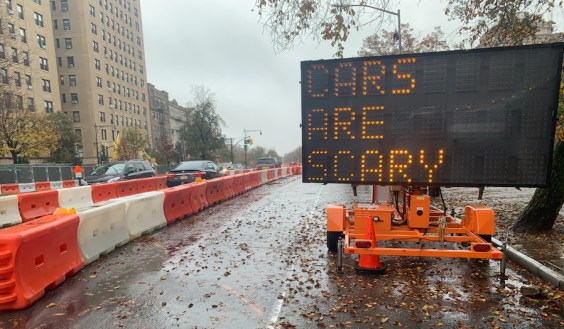The lead image is part of Oakland's one-mile protected bike lane project on 14th Street between I-980 and Oak Street. The sidewalk level area in the picture is between Harrison and Alice.
"It's a nice detail as this raised segment was designed intentionally to support vans serving the senior living facility at this location. The raised bikeway allows for people using mobility devices to get between the sidewalk and the vans parked at the pick up zones along the curb," explained Bike East Bay's Robert Prinz. "Protected bikeways and accessibility needs can be compatible, with thoughtful design and enough funding to deliver robust solutions."
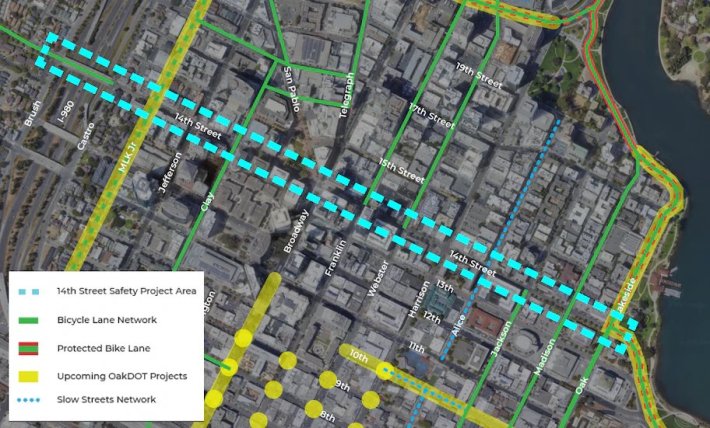
It's these kinds of details—thinking of the needs of people who may have trouble getting to the curb with a bike lane in the way—that have earned the praise of advocates. When Streetsblog interviewed Bike East Bay co-director Rebecca Saltzman, she was also singing the praises of this project's deets.
Take, for example, this loading zone at the federal building auditorium entrance at 14th and Clay:
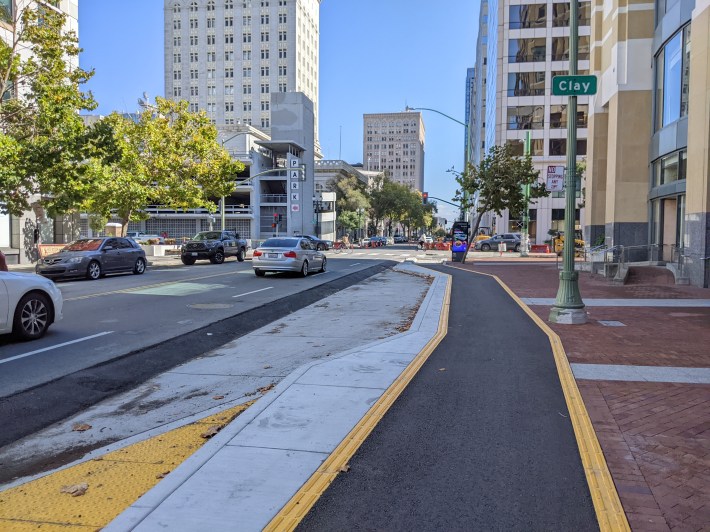
The bike lane again comes to sidewalk level to help pedestrians get across. A loading zone is preserved. And yellow tactile strips make it clear what's bike space and what's sidewalk. Green paint will make this even more clear when the project is completed. Note also the ramp to street level on the left for those who may not be able to step up and down a curb.
Streetsblog was also impressed by the grates to prevent the drainage channel between the bike lane and the curb from becoming a trap for cyclists. Albeit, it's obviously going to be challenging keeping it clear of leaves, as in the photo below:
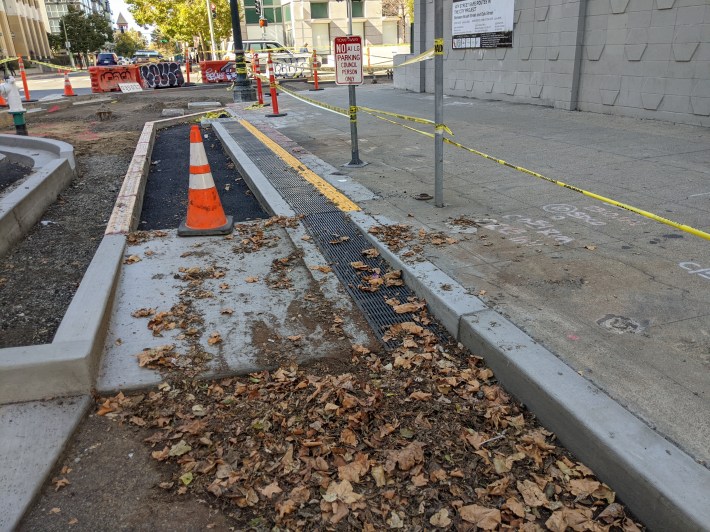
There are large sections still under construction. But a bit less than half of it is rideable. The city has done a good job of building large intersection islands to maintain sightlines and slow down turning cars:

And the protective curb isn't just a curb—it's wide enough to provide a buffer space so that when passengers open a car door, it leaves space to avoid a collision, as seen in the image below:
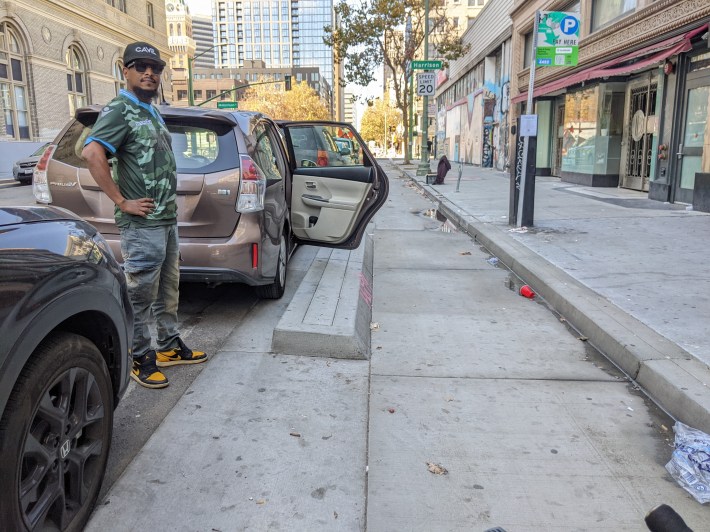
In addition, the city installed long railings to keep bus riders from stumbling backwards into the bike lane or crossing at random, unpredictable locations that might lead to a bike vs. bus rider collision.
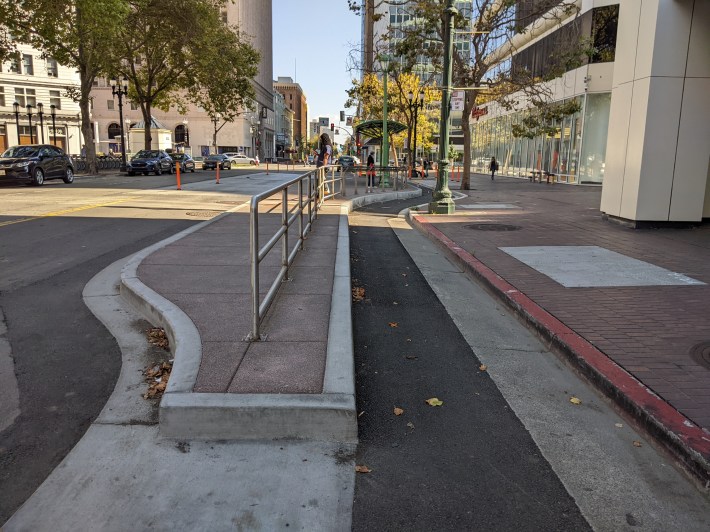
They've also obviously put a lot of thought into vegetation and drainage, using gardens to help protect cyclists at corners.
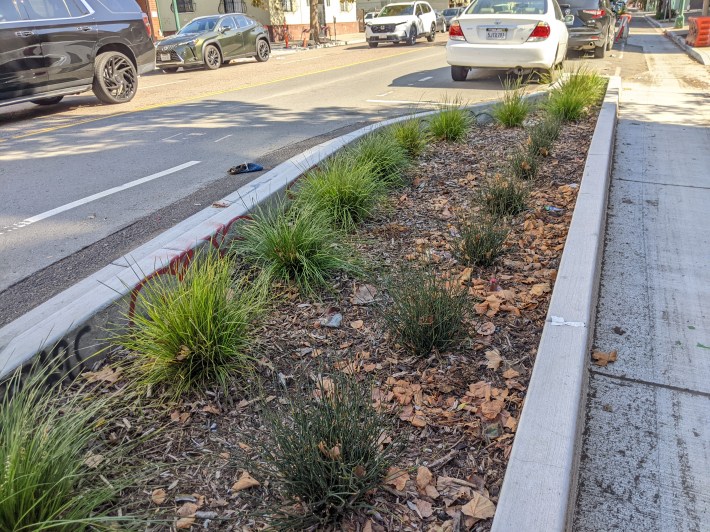
And as with past Oakland projects, new curbs are angled to reduce the chance of a cyclist munching out if they brush against the curb.
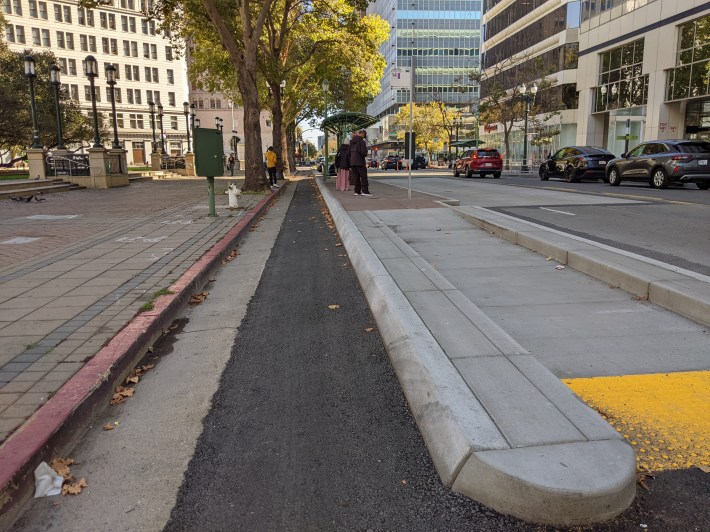
Unfortunately, a bike lane, even a protected one, can't account for every jackoff, as seen below. Some enforcement is still needed.
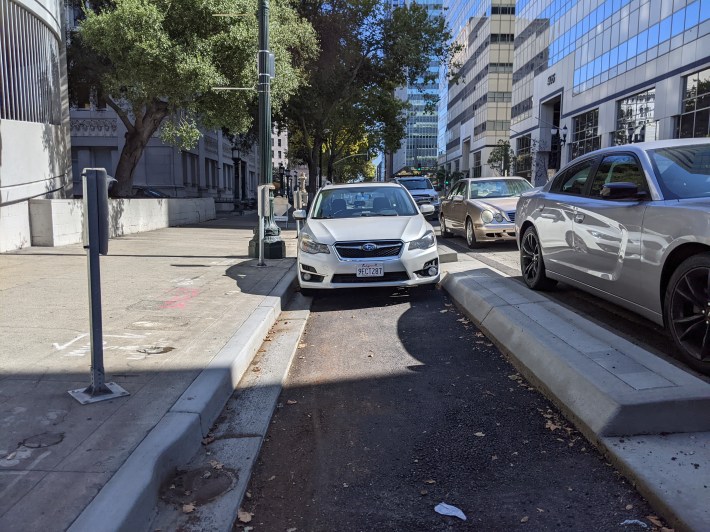
One last detail, and this one Streetsblog doesn't like at all: the timeline. When last covered in August of 2024, Oakland had a timeline page on its website that said the project would be finished this fall. That's now a dead link. Streetsblog emailed an official at Oakland DOT to try to find out when it's now projected to be finished. However, "based on what I see and likely more wet weather incoming, my guess is that Q1 or Q2 of 2026 is likely," said Prinz.



